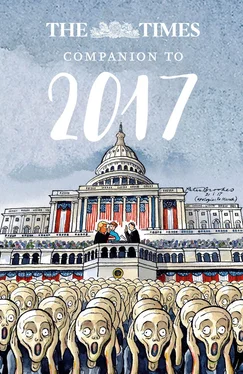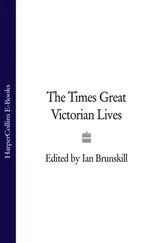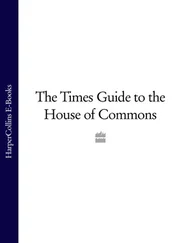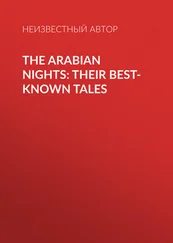Any ambivalence has been around whether to tell strangers. Is it better to be taken for a girl and carry the burden of the secret, or to be open about what is happening, with all its complexities? But what Terri would like are answers. “I’d really like to know why,” she tells the consultant at the Tavistock. “Where did this come from? She can’t have made it up, because she was too small. We didn’t know anyone who was trans. She’d never even heard of it. I know it’s normal for little boys to play with dolls but to never be interested in one car? To never be interested in Spider-Man? I’d like a reason. But it looks like I’m never going to get one.”
There is just one photograph left of Ash as a boy. It’s on Terri’s phone. All the others have been deleted or shredded. “We did it together,” Terri tells me.
What would Freud make of Ash, born Ashton Andrew, name changed by deed poll this year to Ashley Julianne? In a very short space of time the idea that someone can be born into the wrong body has become mainstream. The word “trans” — short for transgender — has become part of our language. So much so in the LGBT world (lesbian, gay, bisexual and transgender), it can seem as though it’s the T that’s taking up all the oxygen. And now it’s trans children who are making the headlines. The award-winning US drama series Modern Family has introduced an eight-year-old trans character. Last month CBBC aired an online drama about a boy who wants to be a girl. Tumblr and Reddit have become a virtual space where children share their treatment options.
Yet I’d suggest that Dr Polly Carmichael, the consultant clinical psychologist who leads the GIDS unit, has one of the most challenging jobs in the NHS. Until now she has turned down media requests, concerned that their work will be misrepresented. (The most common misconception, she says, is that the service’s main job is to prescribe hormone drugs.)
Carmichael is a softly spoken, cheerful woman, who laughs easily. Watch her in the consulting room and she has a stillness about her that is calming. She also chooses her words carefully. This is an area where even the language used is hotly debated. (For instance, a trans teenager who was born a boy is referred to as a “natally assigned male”. An outsider can start to tie themselves up in verbal knots.)
On the day we meet Carmichael has to choose the new colour scheme for the department’s revamp. Much trickier is the task of negotiating the demands of a vocal trans community together with meeting the needs of children with complex emotional lives. Not to mention parents coming to terms, or not, with a child who says they are trans.
At the same time there is another group gaining ground: people who argue that we are at “peak trans”, that we’re living in a sexualised culture within which there is enormous pressure on children to fit gender stereotypes and where being trans has become a glamorous “lifestyle choice”. There is a view that this is a generation for whom, unconsciously perhaps, becoming the opposite sex is actually more acceptable than being gay, or not fitting clichéd ideas of what it means to be male or female.
No one can agree on what causes gender dysphoria. And why so many children now say they are experiencing it, or even what it is exactly. Is it a biological condition? A psychological one? Is it genetic or learnt behaviour? Is it nature or nurture? Nor is there one reason why there has been such a dramatic rise in cases — a 100 per cent increase in the past 12 months in Britain. Research is patchy.
What is indisputable is that this is an area that is moving faster than anyone might have imagined, even two years ago. “We are all learning,” says Carmichael. “There is no certainty in this area. Certainty is about being closed, which is unhelpful. It’s all about being thoughtful, and careful, and treating everyone individually. We don’t take a view on the outcome of a young person’s gender identification. Our job is not to presuppose anything about what they are going through.”
She goes on: “Some adolescents come here who are very troubled. They have only just told their parents.” There are a few who contact the unit directly, without having told their parents or their GP. “There is a feeling that you have to act as quickly as possible, often because of fears of self-harm.” According to a survey by the trans charity Mermaids 48 per cent of trans people under 26 say they have attempted suicide. “But on the other hand,” she says, “there are many young people we see who are doing really well. It’s all about promoting resilience in these young people.”
The difficulty is that building emotional confidence takes time and for some young people whose bodies are developing — and their parents who may just want this “sorted” — time feels like the enemy. “For families it can be very difficult because they are seeking certainty, but the reality is that we don’t have certainty.”
The explosion in the figures has led to the impression in the media that there are swathes of children gaily changing gender. The reality is more complicated. About 80 per cent of the children who come to the service before adolescence eventually change their minds. Most decide that they are gay, or bisexual. Conversely, for those who come during adolescence, the figures are reversed and about 80 per cent do pursue sex reassignment.
I’m allowed to sit in on a staff meeting where therapists bring along cases they want to discuss. Young children like Ash may be unusual, but they are not rare. Some have been coming to the unit for 12 years. Many of them, like Ash, will have been living as the opposite gender since they were at nursery and have built up long-standing relationships with their case workers. But one of the therapists mentions the case of a “natally assigned girl” who has been taken by his parents to America for a mastectomy. Children in a hurry to change gender — and parents who fear for their psychological wellbeing — are making potentially traumatic life-changing decisions that cannot easily be reversed.
This is what Carmichael and her team must grapple with. The increase in demand means that children who used to be seen within 18 weeks currently have to wait nine months (although it is hoped that the recruitment drive will change that). Transgender groups complain about the delay and argue that experts at units like the Tavistock are too cautious. Much of the debate swirls around hormone injections: both hormone blockers — prescribed at puberty to inhibit the development of secondary sexual characteristics such as breasts or facial hair — and cross-sex hormones, which the Tavistock prescribes at 16 to masculinise or feminise the body. Thus, a girl who wants to be a boy (a natally assigned girl) will be given testosterone (or “T”, as it’s known in the chat rooms). It’s after this that, when the person is 18 and goes into the adult service, they can opt for surgery.
Hormone blockers are seen as a chance to put the brakes on development, to pause and think about the future. However, 90 per cent of patients go from hormone blockers to cross-sex hormones, hormones that leave teenagers infertile. And it’s these cross-sex hormones that cause the most controversy. In America they are prescribed at private clinics to patients as young as 12. There are some in the trans community who argue that the age limit is too high in the UK.
Helen Webberley, a GP in Wales, has set up a private gender clinic and recently started treating children, a “handful” of whom, according to news reports, she has started on cross-sex hormones, including a 12-year-old. Meanwhile, the internet means that there is little to stop under 16-year-olds from buying cross-sex hormones online.
Читать дальше












